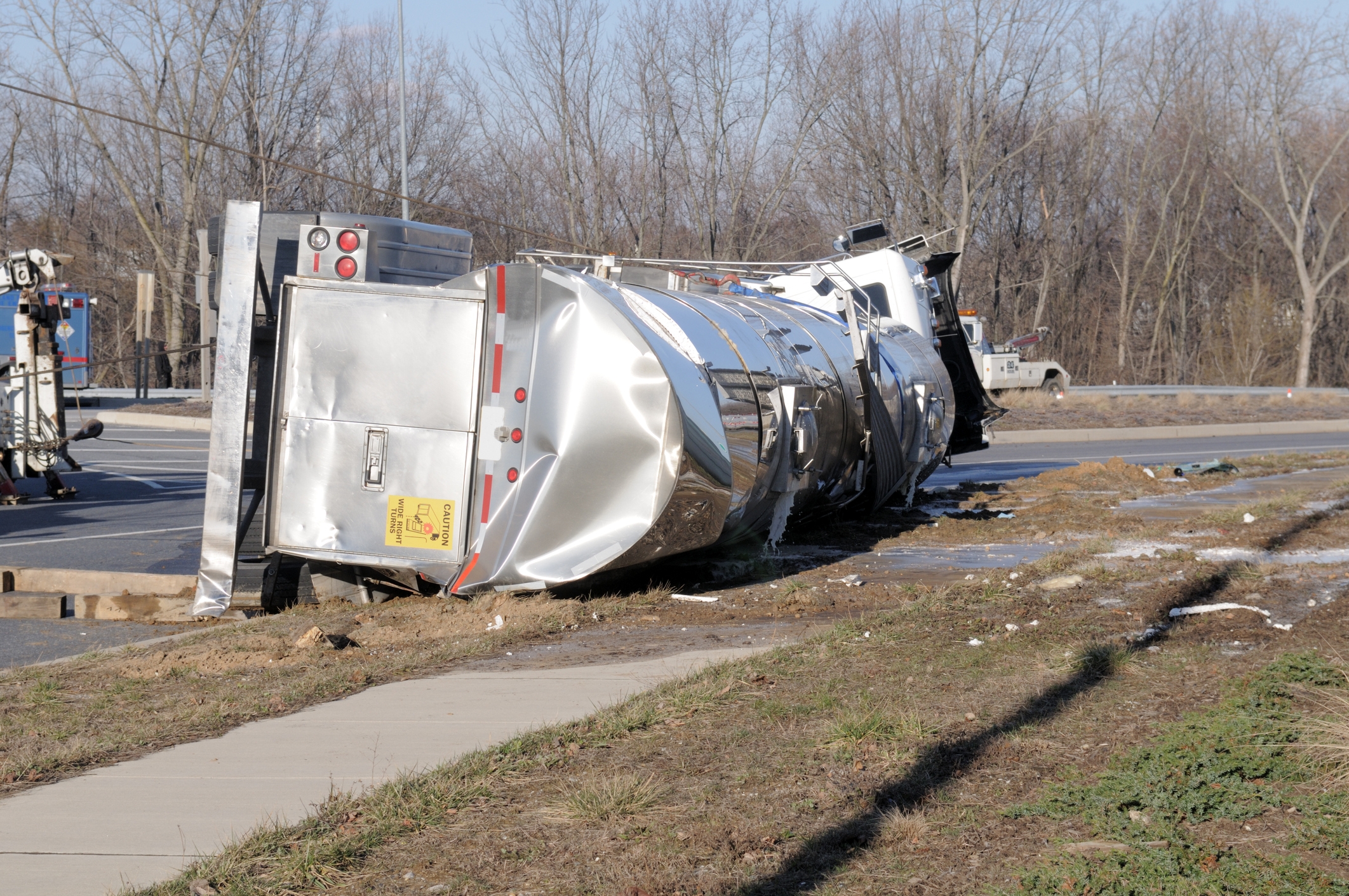
Truckers play a key role in the United States economy, commercial transportation industry, and generating revenue. According to an article citing Business Insider, the trucking industry collects annual revenues of $650 billion, which represents about 84% of the total revenue of the entire commercial transportation industry. Due to the size and significance of the industry, truckers are held to higher safety standards by states, including New York.
Accidents involving trucks pose a greater risk of severe injuries and fatalities due to their weight and size, especially when compared to other vehicles. In its 2018 Large Truck and Bus Crash Report, the U.S. The Department of Transportation found there were nearly half a million police-reported crashes involving large trucks in the span of a year, resulting in 4,415 fatal crashes.
Types of Truck Accidents
Although no two truck accidents are identical, there are consistent types and patterns found in truck accidents across the nation.
- Collisions – Often passenger vehicles experience significant bodily or property damage when colliding with a semi truck, as a fully loaded semi truck can weigh up to 80,000 pounds. A vehicle colliding with a truck in transport is the first harmful event (the first event during a crash that resulted in injury or property damage) in 73% of fatal crashes involving large trucks.
- Jackknife – Substantial accidents can happen when a tractor loses control of one or more trailers. Such accidents can result from multiple factors such as inclement weather conditions, suddenly braking, or a brake malfunction. This can lead to trailer detachment when a tractor becomes completely separated from the truck’s cab. The trailers then have the potential to hit other vehicles, stationary objects, or spin out of control.
- Underride/override accidents – Due to the height of semi-trucks and trailer attachments, tragic accidents can happen when another vehicle rear ends, is rear-ended by, or T-bones a tractor trailer and then slides under it.
- Rollover accidents – Rollover truck or trailer accidents have the potential to cause severe damage to both vehicles and passengers because of their substantial weight. Rollovers can result from improperly loaded trailers, trailers carrying unstable cargo, tire blowouts, and jackknifing.
- Runaway trucks – Due to the number of axles and tires, tractor trailers must employ multiple braking systems, such as hydraulic brakes, electric brakes, and compression release brakes. All of these brakes have a potential for failure due to manufacturing error, poor design, or lack of maintenance. Runaway trucks pose a particularly high risk when going down hill and gaining momentum.
- Wide turn accidents – Semi trucks must swing out wide when making a turn, providing a significant threat to smaller vehicles within a trucker’s blind spot. Passenger vehicles can get sideswiped or squeezed if they are caught between the truck and a highway embankment.
- Falling cargo – Trucks carrying heavy or large quantities of freight also pose a threat to surrounding vehicles if the cargo is inadequately secured. Such cargo has the potential to break free and pose a substantial threat to oncoming traffic. Read more about loading issues in this article.
Causes of Truck Accidents
There are many causes for truck accidents and determining fault can sometimes be challenging. Due to the complex nature of such accidents, it’s important for the victims to seek medical and legal help right away to ensure the best possible outcome.
Fatal crashes involving large trucks often occur in rural areas and on Interstate highways. Approximately 57% of all fatal crashes involving large trucks occurred in rural areas, 26% occurred on interstate highways, and 13% fell into both categories by occurring on rural sections of interstate highways. New York has both major highways and rural roadways throughout the state.
According to a report released by the New York State Department of Motor Vehicles (NYSDMV), nearly 83% of all truck crashes were attributable to human error. The most common cause of crashes included the following:
- Driver inattention/distraction (18.4%) – Truck drivers often face long hours on the road and may suffer from severe fatigue leading to inattention. Oftentimes, the exhaustion and distraction sets in at night; statistics show that 23% of all injury crashes involving large trucks occurred between 6:00 pm to 6:00 am.
- Following too closely (15%) – On weekdays when highways are congested, trucks or other vehicles may be following too closely when a sudden stop occurs, leading to the potential for a rear-end accident. The vast majority of fatal crashes (83%) and nonfatal crashes (88%) involving large trucks occurred on weekdays (Monday through Friday).
- Unsafe lane changing (10.5%) – Failure to use appropriate signals or speeding can cause truckers to unsafely change lanes. Due to the substantial size and weight, a truck side-swiping or sandwiching a vehicle while changing lanes can lead to serious injury.
How Will I Receive Compensation?
New York uses a pure comparative negligence fault model. This means each party is responsible only for his or her percentage of fault. Even if you are 99% at fault, you have the opportunity to recover compensation in a personal injury lawsuit. However, the court will reduce the amount of damages awarded in proportion to your degree of fault. If the case goes to a jury trial, the jurors will determine the percentage each party was at fault.
For example, in Tselebis v. Ryder Truck Rental, Inc., the court held a motorcyclist’s own negligence in the accident did not prevent him from receiving compensation. Here, a truck driver collided with a motorcycle. The truck driver testified that he entered the intersection against a red light and did not see the motorcyclist prior to the impact. His own admission of fault constituted a clear showing of liability for the accident. Although the motorcyclist may have been partially responsible, the court held that his conduct merely could diminish his compensation in proportion to the culpable conduct of the driver.
Frequently Asked Questions
You may recover money for both past and future expenses. Past expenses are calculated from the time of the accident up to the time of the trial. You are asking the jury to award you compensation for what you have already endured – this could be pain and suffering from medical procedures, lost wages, and rehabilitation costs. Future costs look ahead if the victim has not fully recovered. In these cases, the jury will be asked to award the injured person for future damages in the foreseeable future.
Oftentimes, multiple parties may be at fault. The truck operator, a third-party (such as a mechanic who improperly installed brakes), or a trucking company employer may be fully or partially responsible for your injuries. Due to the complexity of filing suit against multiple parties, it’s important to contact an attorney right away to walk you through the process to negotiate the best possible outcome for you.
New York law requires that injured parties file their lawsuit within three years of the date of the crash. However, if you are seeking to sue a government entity such as the Federal Motor Carrier Safety Administration (FMCSA), then you must file a notice of claims within 90 days of the accident. The city or city agency will acknowledge receipt of your notice may request a hearing or a medical examination. Once the notice has been filed, you will have one year and 90 days to file a lawsuit.
What Should I Do if I’ve Been Injured in a Truck Accident?
If you or a loved one has been injured in any type of truck accident, contact Rosenblum Law for a free, no-obligation consultation today. Our experienced personal injury attorneys can analyze the situation and negotiate the best possible settlement for you. Call 888-815-3649 or email us today.







 888-815-3649
888-815-3649
